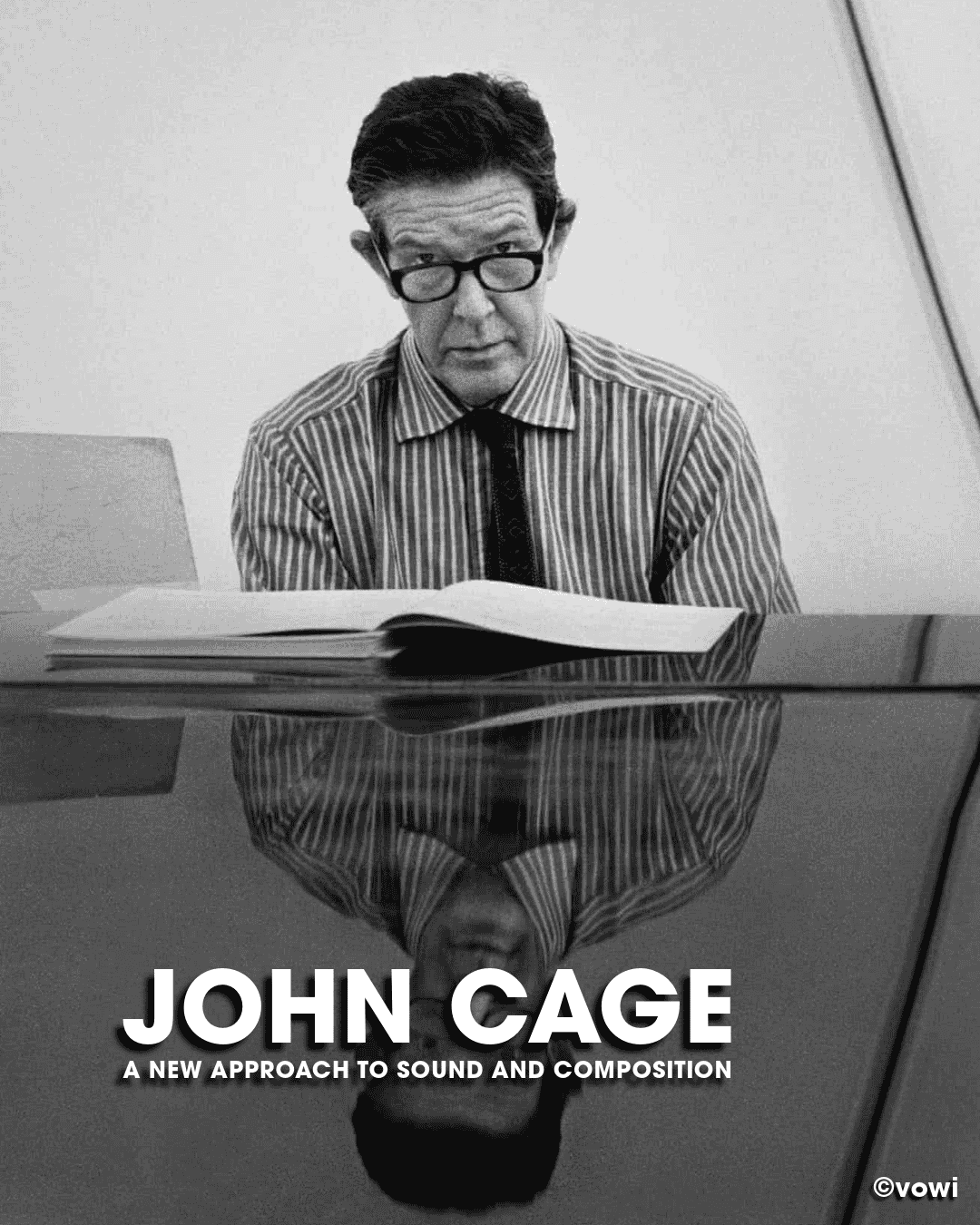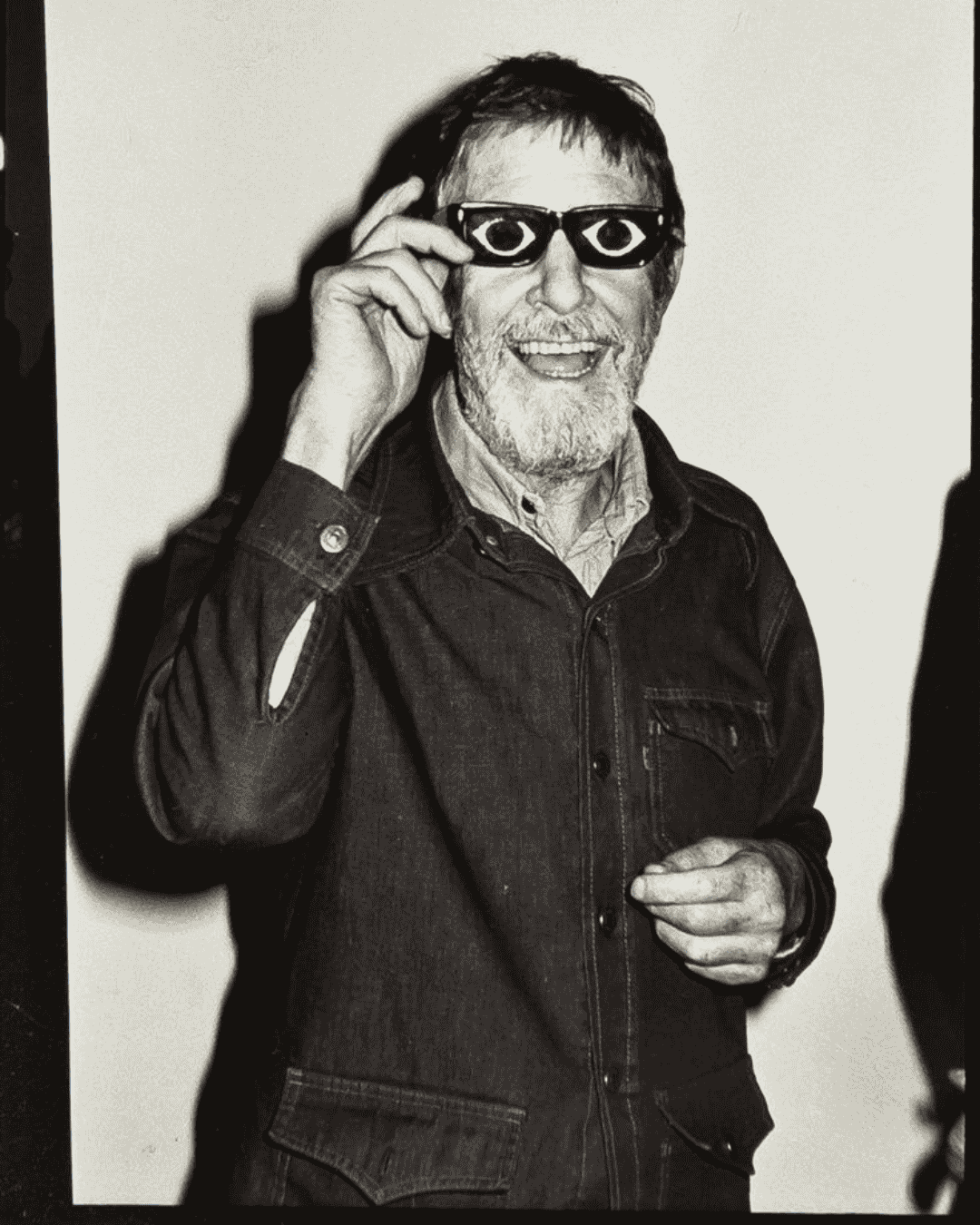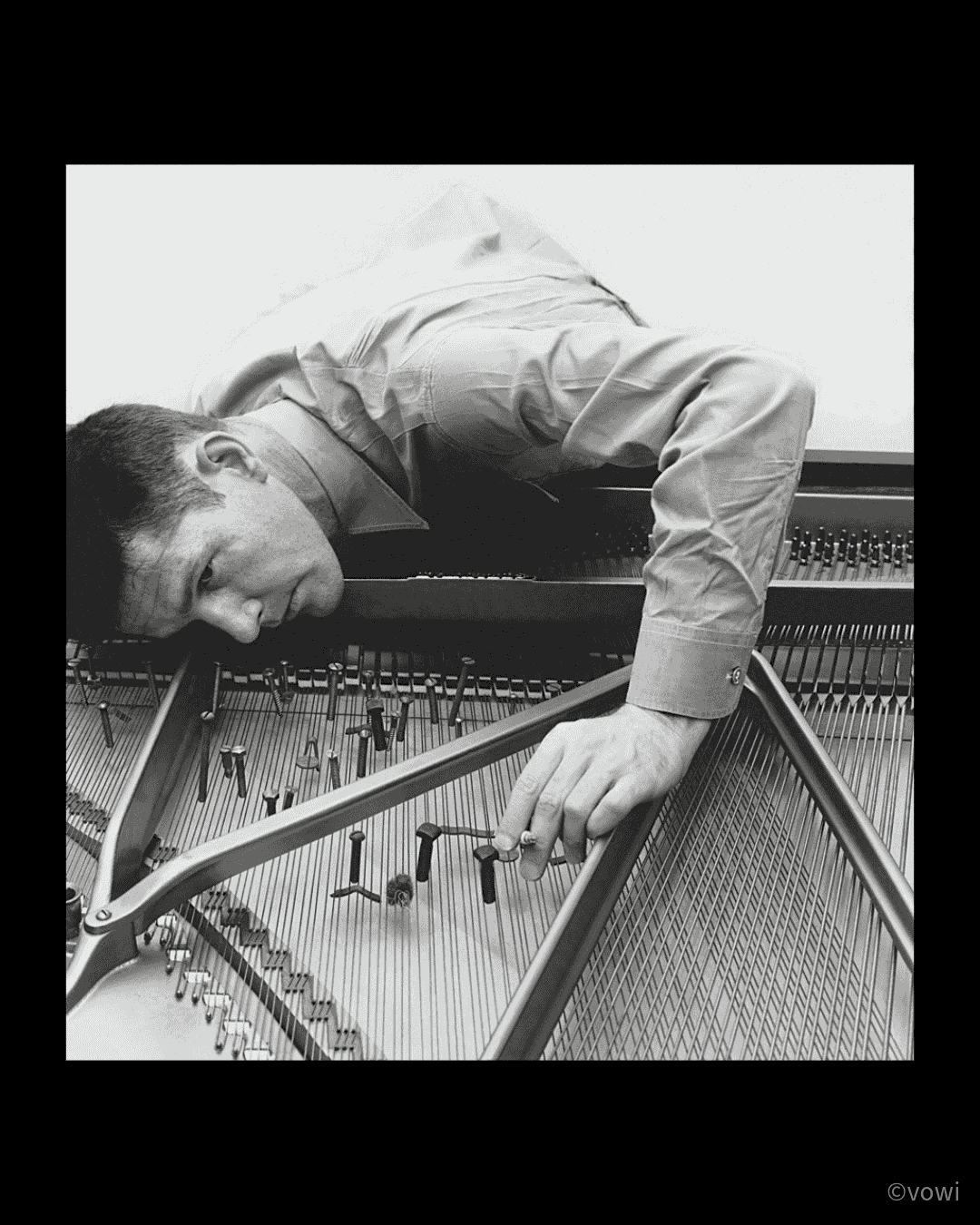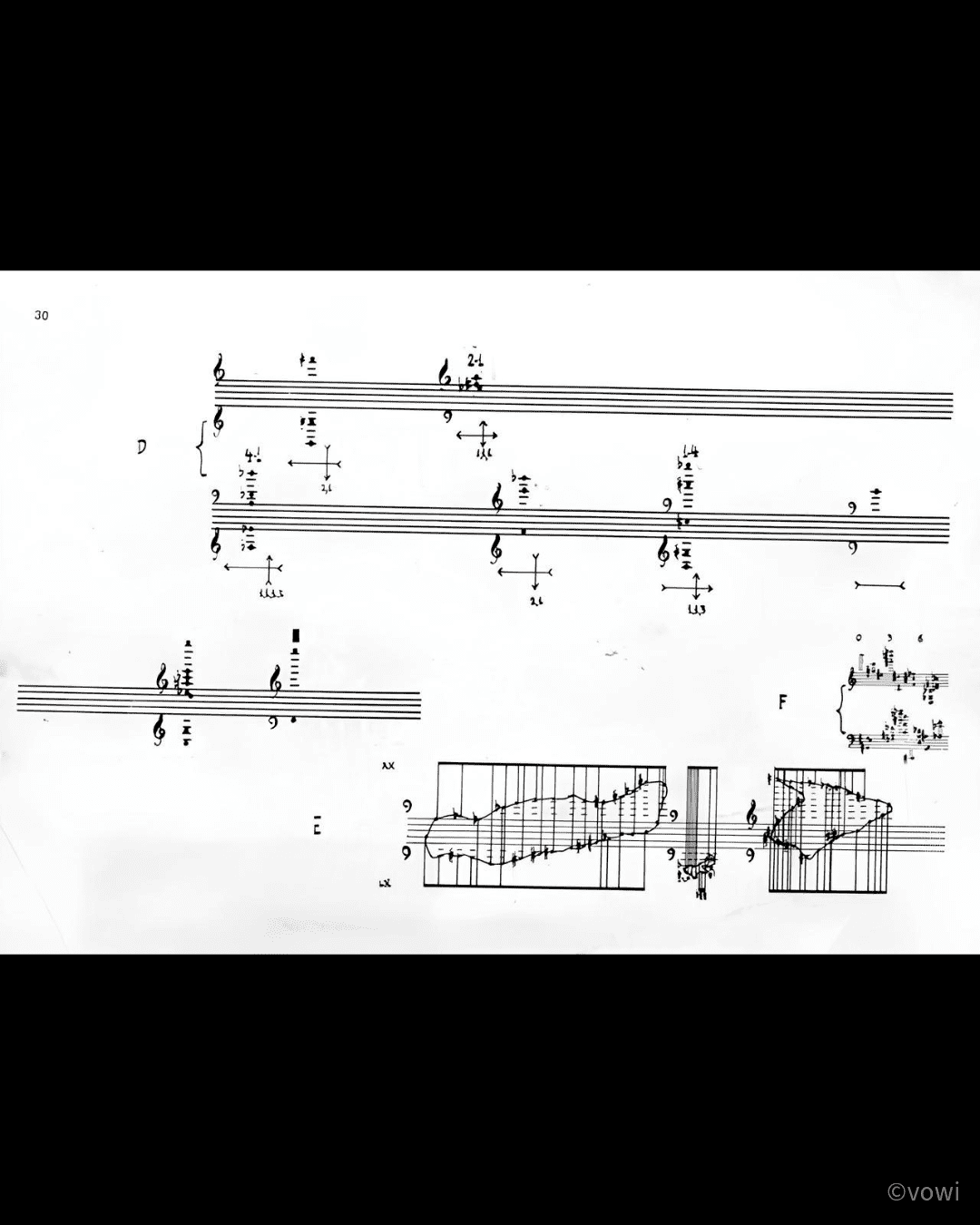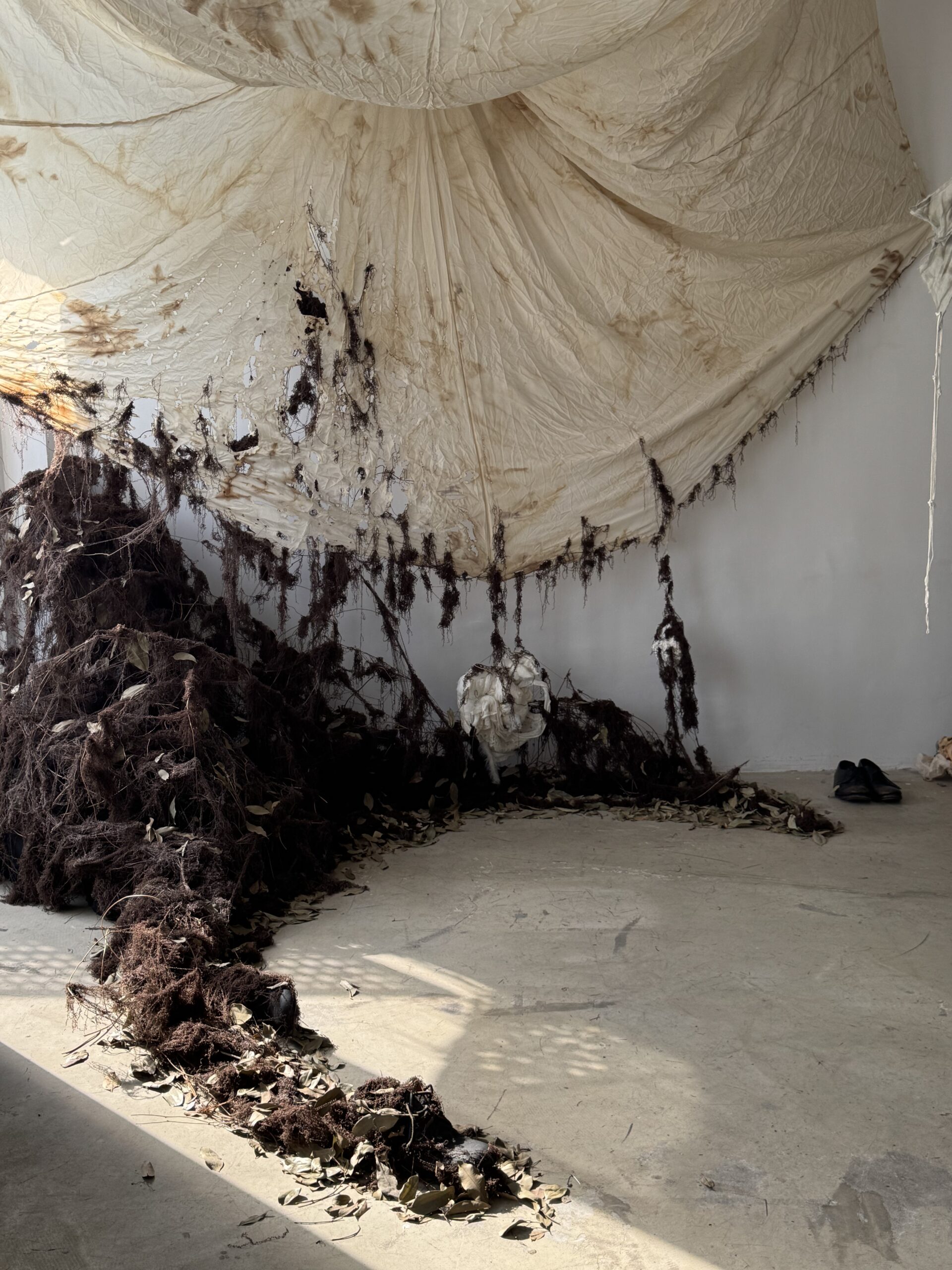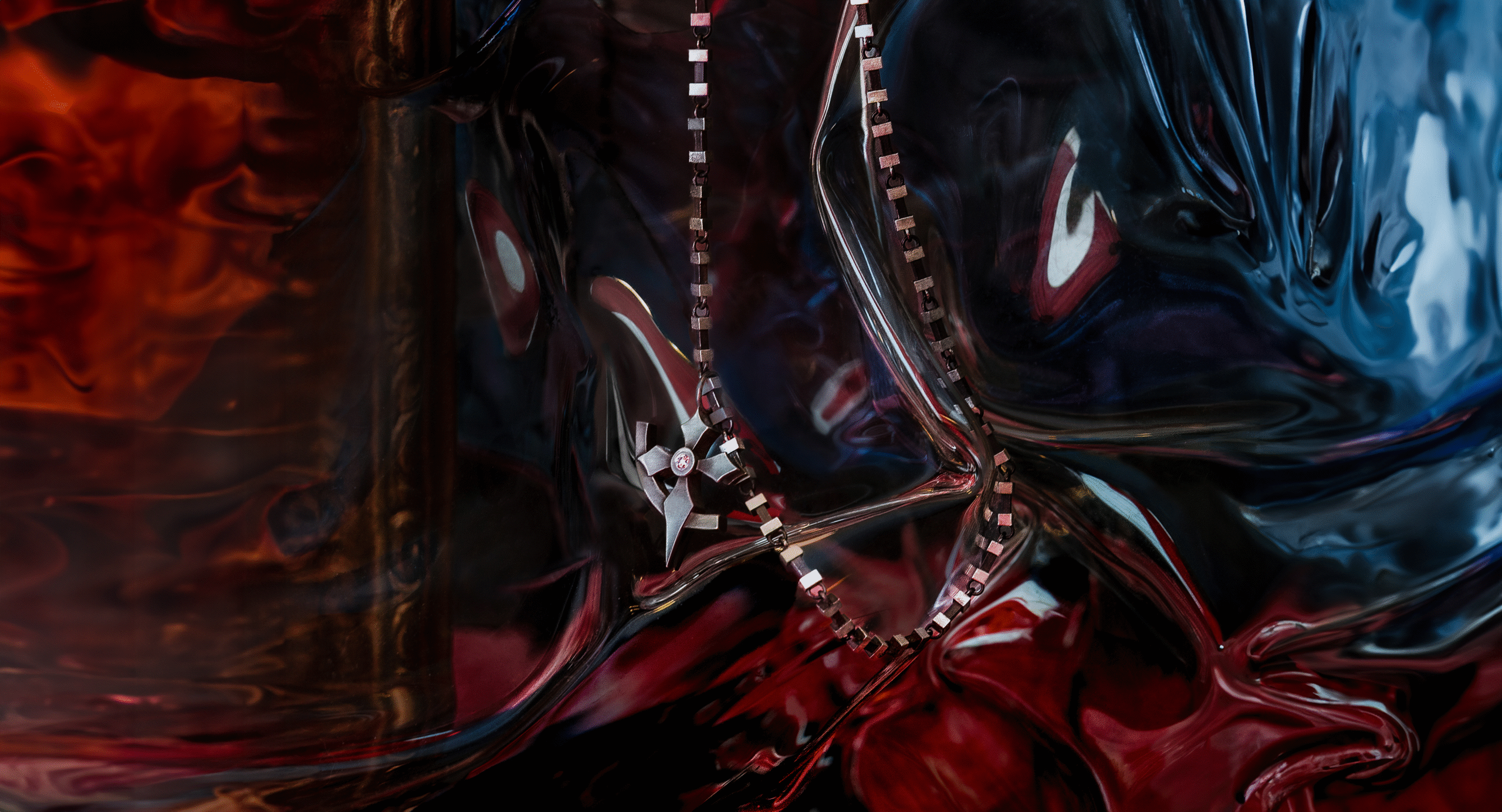John Cage (1912–1992) was an American composer, music theorist, and artist who became one of the most influential figures in 20th-century music. His early education in various art forms, including architecture, painting, and literature, profoundly shaped his unconventional approach to composition. Cage studied under Arnold Schoenberg, who introduced him to twelve-tone technique, and Henry Cowell, who encouraged his exploration of non-traditional sounds. His 1950 Guggenheim Fellowship allowed him to travel to Europe, where he deepened his connection to avant-garde movements and further expanded his artistic boundaries.
In the 1960s, Cage became deeply involved in the Fluxus movement, a collective that sought to dissolve traditional boundaries between art forms. Fluxus artists, including Cage, emphasized the integration of music, visual art, and performance, rejecting the structured conventions of classical and contemporary art. Cage’s most famous works, like 4’33” and Water Walk, challenged the traditional understanding of music. 4’33”, in which performers remain silent for over four minutes, deconstructed the distinction between sound and silence. Water Walk, in which everyday objects were used as instruments, exemplified his belief that any sound could be music, expanding the range of what was traditionally accepted as music.
Cage’s philosophy and experimental techniques deeply influenced a wide range of artists beyond music. David Bowie, known for his genre-defying sound, was influenced by Cage’s use of chance and non-traditional sound in albums like Low and Heroes. These albums incorporated electronic experimentation and unconventional song structures, much like Cage’s work with sound and silence. Video artist Nam June Paik also drew inspiration from Cage’s boundary-breaking approach to art, integrating sound, video, and performance in his works. Cage’s ideas about art, sound, and chance continue to influence contemporary artists and musicians, and his legacy can be seen in the experimental approaches to multimedia art that challenge the conventional limits of creativity.

